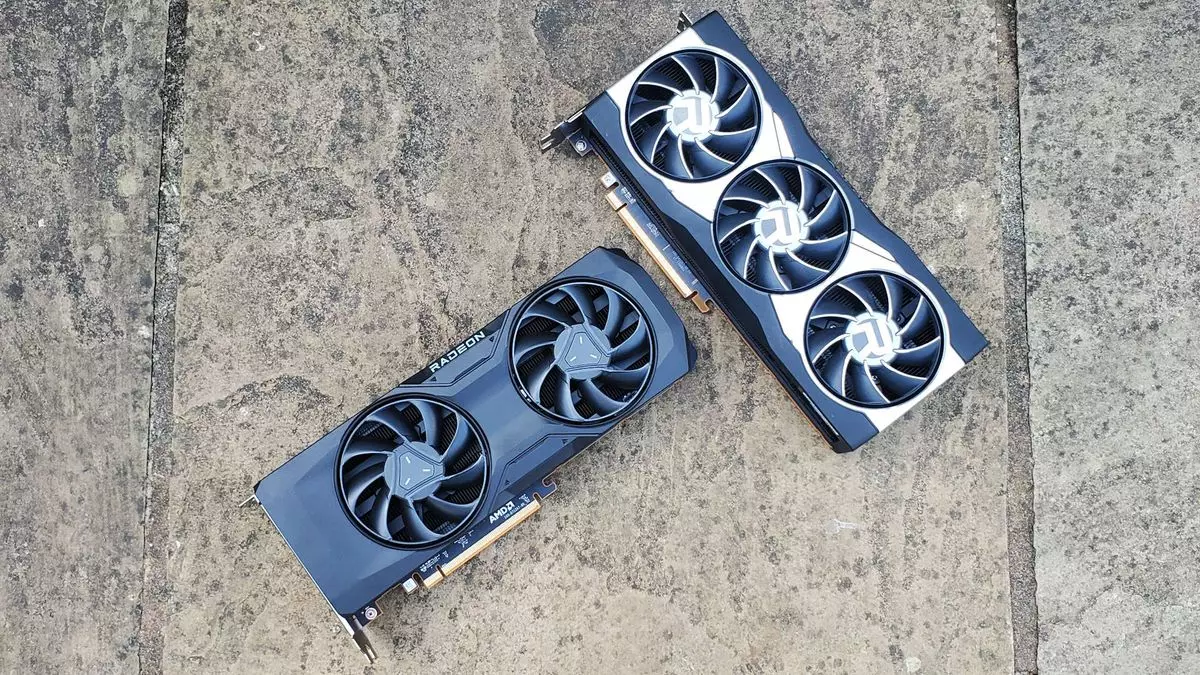AMD’s recent performance update during their latest earnings call has sparked renewed discussion about the company’s enduring struggle in the gaming graphics card sector. Even amidst a record-breaking third quarter where AMD reported revenues of $6.8 billion, the culprit behind their declining gaming revenue remains a significant concern. CEO Lisa Su’s optimistic words about the upcoming RDNA 4 architecture’s launch in early 2025 clash starkly with the grim reality of a staggering 69% year-over-year revenue decrease in gaming, accounting for a meager $462 million, which is less than 10% of AMD’s total earnings.
The Theatrical Landscape of Gaming Revenues
Gaming, in AMD’s terminology, embodies revenues generated from both PC graphics cards and custom APUs for consoles—primarily the behemoths of the gaming world, Sony’s PlayStation and Microsoft’s Xbox. The vast drop in gaming sales can be partially attributed to the cyclical downturn in console sales; as these platforms mature, the need for frequent upgrades diminishes. Su hinted at a silver lining, suggesting that the anticipated PS5 Pro could revitalize interest and, consequently, AMD’s gaming revenue in the immediate future.
However, the specifics of PC gaming graphics performance are concealed within the broader gaming category, leaving analysts and enthusiasts speculating about AMD’s position relative to Nvidia, its principal competitor. Persistent reports indicate that AMD is losing market share, raising questions about why a company performing well overall should experience such a glaring shortfall in this specific arena.
A significant factor contributing to AMD’s GPU dilemma may lie in its decision to adopt a chiplet architecture. This innovative design has indeed paid off handsomely in the CPU domain, offering cost efficiencies and flexibility; however, the same success has evaded the GPU segment. Initially, AMD thrived with its monolithic RDNA 2 architecture, which performed admirably across various market segments. Unfortunately, with the introduction of the RDNA 3 series, which transitioned to a chiplet model for the RX 7700, 7800, and 7900 series, things took a downturn.
The complexity of successfully implementing chiplets in GPUs raises critical challenges that AMD seems to have underestimated. Early indications suggest that AMD may be reassessing its strategy; reports hint at a return to a monolithic design philosophy with the upcoming RDNA 4 architecture, signaling a possible retreat from the radical chiplet approach. With development timelines shortened, it’s conceivable that AMD felt pressured to revert to a familiar yet simpler design, aiming to fast-track the next generation of gaming graphics.
A Shift in Focus?: The Rise of AI GPUs
AMD’s gaming GPU struggles coincidentally intersect with its increasing success in the artificial intelligence (AI) market. With AI graphics processing units (GPUs) flourishing—reportedly rising from negligible revenues to levels comparable to CPU sales within a year—the company appears to be steering its attention and resources elsewhere. While diversification into AI technologies is undoubtedly promising, it poses the risk of neglecting the traditional gaming GPU market that has defined AMD for years.
The irony here is palpable: poised as a leading contender in the broader semiconductor landscape, AMD’s inability to dominate PC gaming graphics is a curious anomaly. Its focus on AI and related technologies could quell some concerns among investors, yet it raises questions about the company’s commitment to resolving challenges within its gaming division.
As the clock ticks towards the RDNA 4’s launch, AMD finds itself at a crossroads. With diverse revenue streams propping up their overall performance, the company is well-equipped financially. The potential for reviving its gaming graphics segment hinges on delivering a product that meets the demands of an increasingly sophisticated gamer demographic.
While AMD’s journey through the GPU landscape has been fraught with challenges, the path ahead is filled with opportunities as players in the gaming industry await innovations. If AMD can successfully leverage its technical prowess and creativity in future GPU iterations, it might just reclaim its standing as a formidable force in the gaming arena. The hope remains that AMD will not only recognize the potential within its gaming division but actively work towards an ambitious renaissance, because in the world of gaming, even a slight improvement can prove monumental.


Leave a Reply